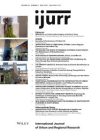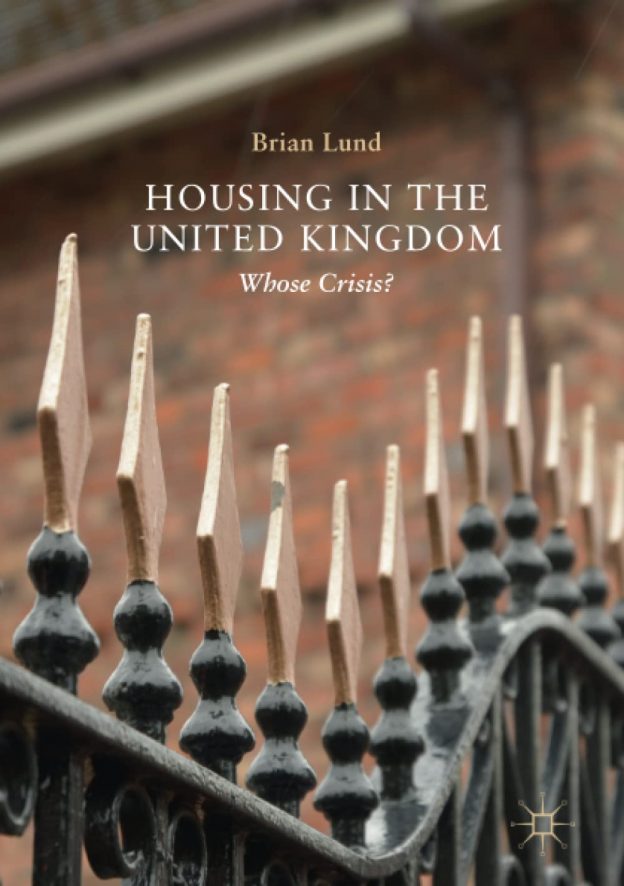It takes real expertise as well as a love of bad news to write consistently and coherently about the disastrous development of UK housing, which means Brian Lund must have both in abundance. He has been prolifically chronicling the ups and (mainly) downs of UK housing policy for several decades, drawing on his fairly unique position as both a social policy lecturer and an elected councillor involved in the nitty gritty of local housing and planning committees.
Housing in the United Kingdom: Whose Crisis? builds on Lund’s successful housing textbooks, and is a welcome addition to a burgeoning field in housing crisis scholarship. Importantly, Lund does not exclusively follow the dominant crisis narrative pushed by politicians and the media that portrays the housing crisis in terms of the frustrated homeowning ambitions of ‘generation rent’, caused by a supply-side shortage at the hands of a restrictive planning system. Instead, he presents a series of interconnecting crises that include the declining quality and size of UK housing and the return of housing conditions thought to have been banished during the twentieth century, such as growing homelessness, overcrowding, and slum-like warehousing of the poorest and least powerful in society.
The book explores the nature and scope of these housing crises across eight chapters. Chapter 1 sketches out the crisis landscape of UK housing with an avalanche of soundbites and statistics. Foremost is the crisis of homeownership, which has fallen since the early 2000s from a high of just under 70% to just over 60% of households, despite successive UK governments making owner occupation their top housing policy priority.
Lund is right to point out that the British media and political establishment focus obsessively on the rate of homeownership as the main weathervane of UK housing success and failure when other experiences are both just as relevant and often rooted in the homeownership obsession. In response, he moves around a number of crisis themes—falling space standards, rising homelessness, globalization, the politics of housing wealth, the political economy of house price inflation, philosophical questions of inequality and social justice, and finally, the variegated nature of the housing crisis viewed through the lenses of age, class, gender, ethnicity, location and tenure. While all are relevant and important, Lund never fully explains what the book’s overarching argument and purpose is in this crucial introductory chapter, or where he stands in relation to the different crisis narratives he outlines.
Chapter 2 is a more coherent and illuminating exploration of what Lund sees as seven ‘slow-burning fuses’ behind the current crises in the UK. Chief billing is given to the privatization of housing production, which has removed the state as a builder and placed total reliance on a private construction sector dominated by volume builders, often acting as land speculators. Lund argues that constrained supply also lies behind the remarkable resurgence of private renting and landlordism, aided by proactive policy intervention to deregulate the sector.
Other fuses include the rise of housing financialization underpinned by the liberalization of the mortgage market; the planned demise and stigmatization of council housing and the increasing commercialization of the remaining social housing stock; the deliberate lack of investment in existing housing stock; the demand-side boom from population growth and new household formation; and changes to the planning system that have actually served to constrain output in the interests of landowners. While these are certainly key elements, the book would offer a more convincing argument if Lund presented them not as diverse fuses, but as sparks stemming from the creative-destructive dynamics of the much wider neoliberalization and financialization of a global economy dominated by corporations.
Chapter 3 discusses the ‘who’ question, exploring how age, class, gender and ethnicity matter in relation to homeownership, renting and housing wealth, while chapter 4 emphasizes the importance of ‘where’, discussing how global cities like London are key sites of transnational real estate speculation. Other topics in this chapter include the role of devolution in shaping housing conditions across the four ‘home nations’ of the UK, and the huge disparities in housing market experiences at the sub-national scale in England. Chapter 5 focuses on the (in)effectiveness of policies, planning frameworks and central-local relationships for the delivery of new homes, and chapter 6 is concerned with the existing stock, examining the problems of empty homes, indecency, fuel efficiency, under-occupancy, and ways of using existing homes better.
Chapter 7 critically evaluates different ways of boosting new housing supply, and it is hard to disagree with the conclusion that ‘If the principal victims of the housing crisis are to receive better homes at lower cost, a major boost in social housing with far greater local government involvement in construction is necessary’ (p. 249). The final chapter discusses the changing alignment of class and tenure with voting patterns, as evidenced by Brexit and the 2015 and 2017 general elections, and the harmful impact that the UK’s party political system has on a properly functioning and fair housing system.
For those looking for a simple introduction to the UK’s dysfunctional housing system and its key policy and political faultlines, this is a great book with which to start. Despite its shortcomings—not least, being overly descriptive and panoramic without a clear stance on the main issues at stake—the book will be of interest to academics, students and an interested lay audience.
Stuart Hodkinson, is lecturer in Critical Urban Geography at the University of Leeds.
Brian Lund.Housing in the United Kingdom: Whose Crisis? Palgrave Macmillan © 2019. Cover used with permission of Palgrave Macmillan
Views expressed in this section are independent and do not represent the opinion of the editors.

